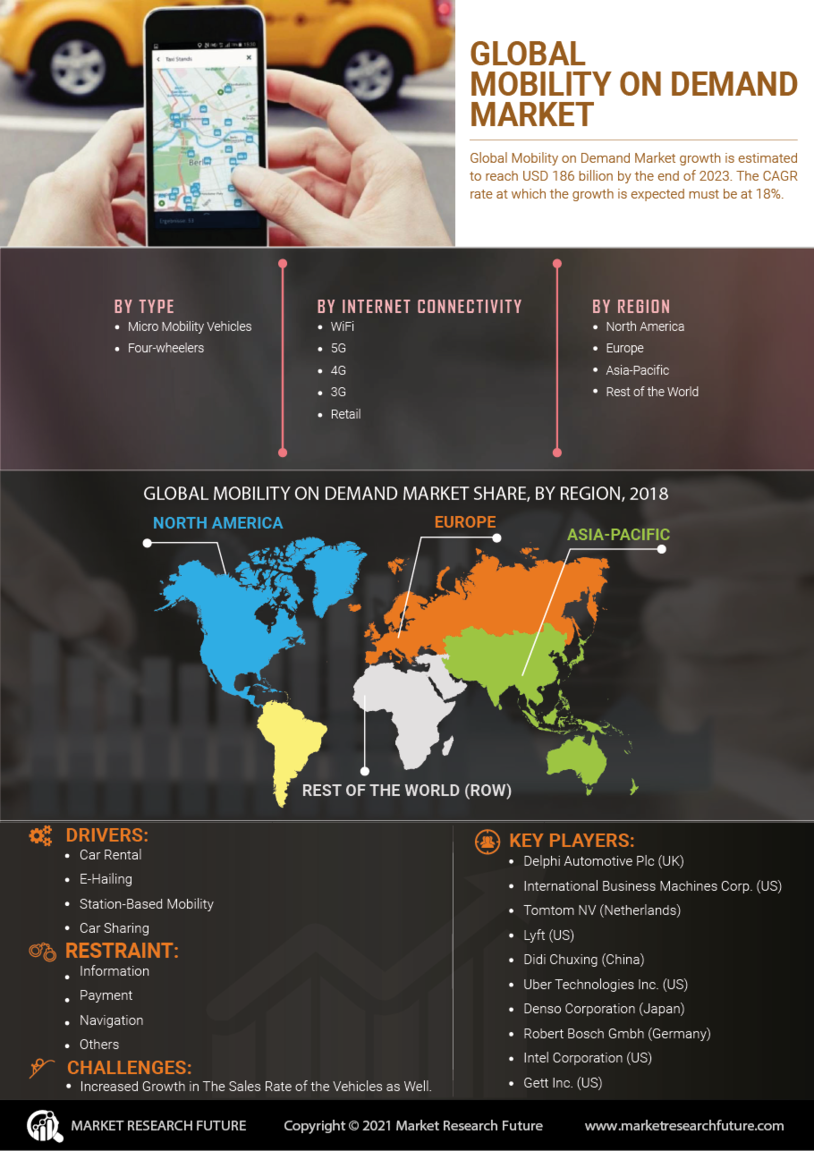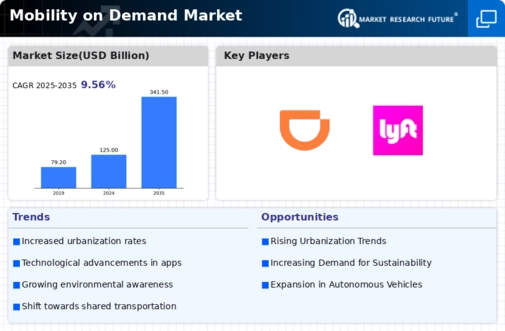Mobility Demand Market Summary
As per Market Research Future Analysis, the Mobility on Demand Market is set to experience significant growth, expanding from USD 125.05 billion in 2024 to USD 259.64 billion by 2032, with a CAGR of 9.56% during the forecast period. The market was valued at USD 112.665 billion in 2023, driven by key players like Cabify and Uber, who are innovating to enhance market growth. The shift from car ownership to renting, particularly in the intercity segment, is a notable trend, supported by rising urbanization and government initiatives for smart cities.
Key Market Trends & Highlights
Key trends driving the Mobility on Demand market include:
- Projected market growth from USD 125.05 billion in 2024 to USD 259.64 billion by 2032.
- Intercity segment held the largest market share in 2022, reflecting increased demand for shared vehicles.
- 5G connectivity dominates the market, essential for real-time communication in ride-hailing services.
- Micro-mobility vehicles are preferred for their affordability and environmental benefits.
Market Size & Forecast
| 2024 Market Size | USD 125.05 Billion |
| 2032 Market Size | USD 259.64 Billion |
| CAGR | 9.56% |
Major Players
Major players include Uber Technologies Inc., Lyft, DidiChuxing, Delphi Automotive Plc, and Intel Corporation.



